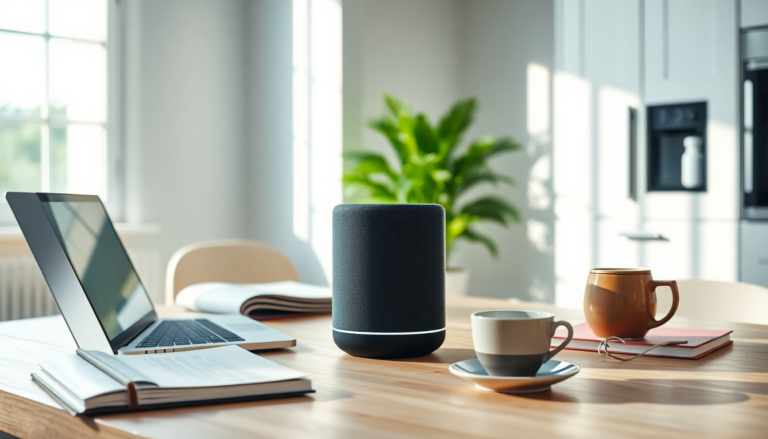Argomenti trattati
The landscape of technology is changing rapidly, and one of the leading forces behind this transformation is the smart speaker market. With a staggering projected growth from USD 9.60 billion in 2024 to USD 57.48 billion by 2033, at a compound annual growth rate (CAGR) of 22.00%, it’s hard not to take notice. As someone who has been watching this trend for years, it’s fascinating to see how voice assistants and AI technology are reshaping our homes and daily lives. But what exactly is driving this meteoric rise, and what challenges lie ahead?
Understanding the growth drivers
The integration of smart home technology is arguably the most significant factor propelling the demand for smart speakers. These devices serve as central hubs, allowing users to control a plethora of connected appliances—from lights to security cameras—all through simple voice commands. I remember when I first set up my own smart home; it was like stepping into the future! The ease of automation and the ability to command my environment with just my voice felt revolutionary.
As the Internet of Things (IoT) and artificial intelligence (AI) continue to evolve, the ecosystem surrounding smart homes becomes increasingly complex and integrated. According to various forecasts, the number of IoT devices is expected to surge to 16.6 billion by the end of 2023, with potential growth to 40 billion by 2030. This rapid expansion not only highlights the demand for smart speakers but reinforces their role as essential components of modern living.
The impact of AI on smart speakers
AI-driven virtual assistants like Amazon Alexa, Google Assistant, and Apple Siri are game changers in this arena. These technologies have significantly improved how we interact with our devices, offering more natural and intuitive experiences. Enhanced speech recognition and contextual understanding mean that users can enjoy a more seamless interaction with their gadgets. It’s incredible to think about how far we’ve come! I still chuckle at the early days when I had to repeat commands multiple times; now, it feels like these speakers can almost read my mind.
Furthermore, these advancements are not just about convenience; they also improve accessibility for those who may have difficulties with traditional tech interfaces. Older adults and visually impaired users benefit profoundly from voice recognition technology, allowing them to navigate their environments more easily. As voice tech continues to improve, the potential applications across various sectors—from healthcare to education—are limitless.
Consumer demand for hands-free convenience
Today’s fast-paced lifestyle has fueled a growing consumer appetite for hands-free solutions. Smart speakers cater to this need by offering a plethora of services—from setting reminders and managing schedules to delivering real-time news updates—all just a voice command away. Personally, I can’t imagine my mornings without my smart speaker reminding me of appointments while I sip my coffee. It’s a small but significant way that technology enhances our daily routines.
This multifunctionality has made smart speakers particularly appealing to busy professionals, students, and tech-savvy individuals. The demand for voice-controlled technology is also expanding into cars, hotels, and offices, indicating a broader acceptance of this technology in various facets of life. A recent study revealed that approximately 20.5% of individuals globally use voice search, which is expected to drive further growth in this sector.
Challenges in the smart speaker market
Despite the promising growth, the smart speaker industry faces significant hurdles. One of the most pressing issues is related to privacy and data security. With these devices constantly listening for voice commands, concerns about data privacy and potential surveillance are growing. Users are understandably wary of how their information is collected, stored, and used. As high-profile breaches come to light, companies must step up their game, implementing robust data protection measures and transparent policies.
Moreover, language and regional support present another challenge. While advancements are being made, many smart speakers still struggle with diverse languages and dialects. Consumers in non-English speaking regions often encounter difficulties with voice recognition, limiting the market’s potential. It’s a classic case of tech hitting a wall—companies that fail to address these linguistic barriers risk alienating large segments of potential users.
The future of smart speakers
Looking ahead, the smart speaker market appears set for explosive growth, driven by increasing consumer adoption and technological advancements. However, addressing the challenges of privacy and inclusivity will be crucial for this industry’s sustainability. With the stakes this high, one can only ponder what the next decade will hold. Will smart speakers become even more integrated into our lives, or will they face backlash due to privacy concerns? Only time will tell, but one thing is for sure: the smart speaker revolution is far from over.

